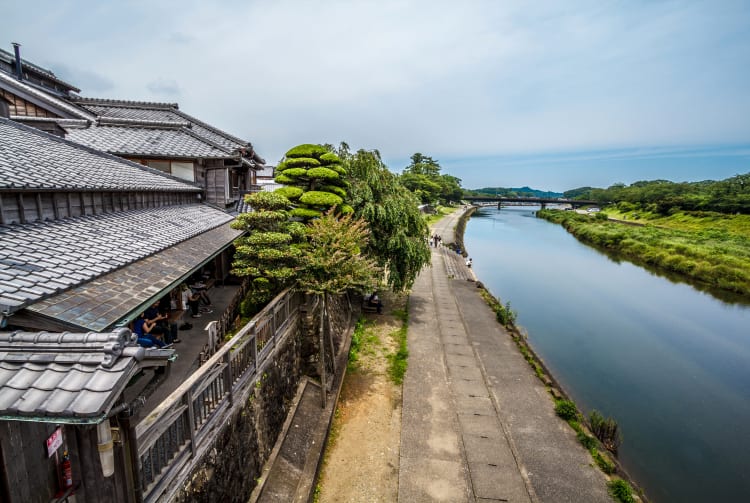Traditional shopping area leading to Japan's most sacred shrine
After exploring the winding paths through the woods on the grounds of Ise-jingu Shrine , spend some time wandering Oharaimachi, the shrine's traditional approach. The old-fashioned street is about a kilometer long and home to dozens of interesting shops and restaurants.
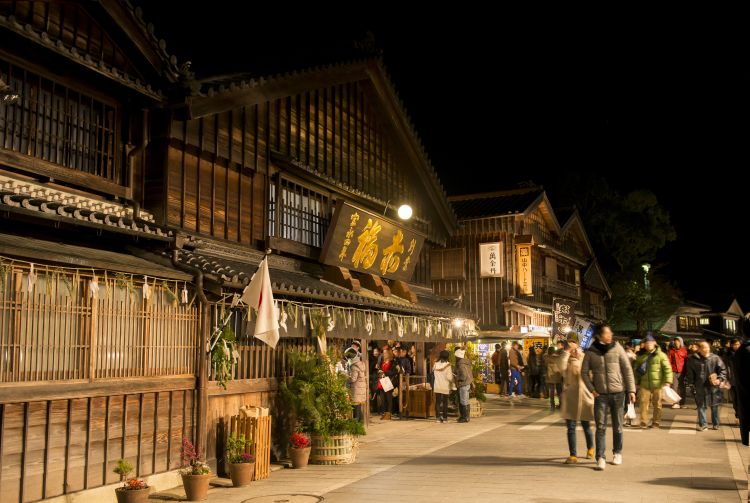
Don't Miss
- Ise udon noodles
- The traditional wooden architecture
How to Get There
Oharaimachi leads right up to the Inner Shrine of Ise-jingu Shrine .
If you're visiting after a stop at the Outer Shrine in central Ise, a bus can get you to Oharaimachi in 10 to 15 minutes.
If you're coming from elsewhere by train, Isuzugawa Station will get you closer. Buses from the station run frequently and take only six minutes each way.
Isuzugawa Station is accessible from nearby major cities on the Kintetsu Line: from Nagoya in about 90 minutes, from Osaka-Namba in around 1 hour 50 minutes, and from Kyoto in approximately 2 hours 30 minutes.
Oharai is a town built around the tori gate to Ise-jingu's Inner Shrine
Oharai gained fame thanks to its location in front of Uji Bridge just outside the entrance to Ise-jingu Shrine's Inner Shrine.
Pilgrimages to sacred areas around Japan grew in popularity from the early 1600s with the end of the violent Sengoku civil war period. As Shinto's most sacred site, Ise-jingu Shrine was no exception.
Most commoners who lived far from Ise could not afford the journey, so communities would pool their resources and send a single villager to make the pilgrimage on their behalf. With the influx of worshippers came money for food, accommodation, and entertainment. Oharai still prospers as a pilgrimage center to this day.
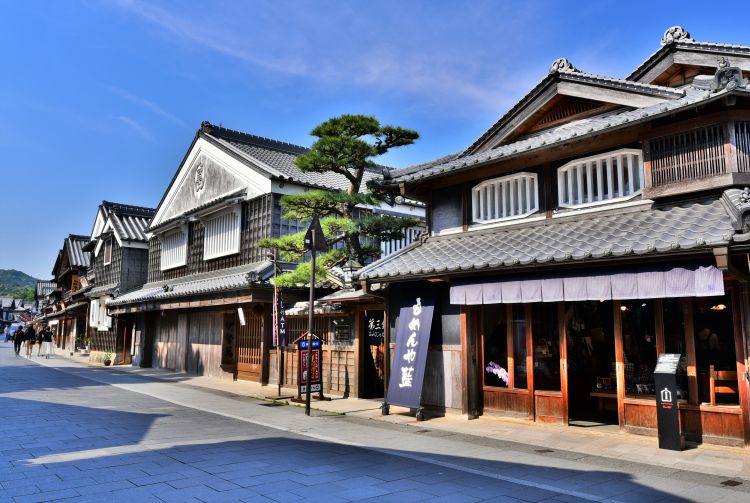
Authentic atmosphere of a traditional Japanese town
Oharaimachi features old-fashioned residences lining a stone-paved thoroughfare. Here you'll find an impressive array of Japanese cuisine, traditional craftwork, and an enormous variety of souvenirs. The street runs parallel to the Isuzu River, where broad paths along the banks make for a nice walk if you need a break from the seasonal crowds.
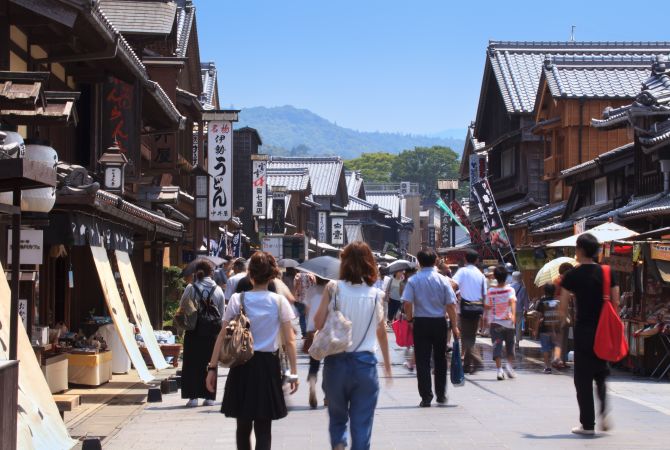
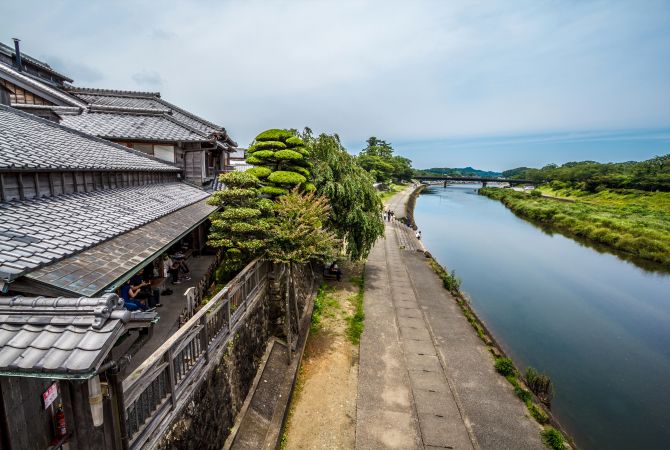
Local traditional cuisine
One of Oharaimachi's more popular specialties is akafuku, a mochi rice cake with an outer layer of sweet red bean paste. You might also want to try Ise udon, thick noodles served in a rich, dark broth. Tekone-zushi is also popular, featuring a bowl of rice topped with raw fish.
Curiosities galore
There are dozens of fascinating shops along Oharaimachi, selling everything from typical Japanese souvenirs to truly unique gifts, including honey made by bees kept right outside the store, beautifully carved statues made of stone, glass or crystal, and dried fish skins (get your camera ready).
Stop and see artisans plying their trade at traditional workshops along the way.
Halfway down Oharaimachi, Okage Yokocho is a small, picturesque district that recreates the traditional streets of Japan in the days when it was ruled by the shogun.
Witness the monthly early-morning pilgrimage
Tsuitachi Mairi, or the "First Day Pilgrimage," takes place on the first of every month. Worshippers wake up early to visit Ise-jingu Shrine and pray for health, wealth, and bountiful harvests. Several shops in Oharaimachi open early in the morning for the occasion. Don't miss the morning market in the area that is open until 8:00 a.m.




















































